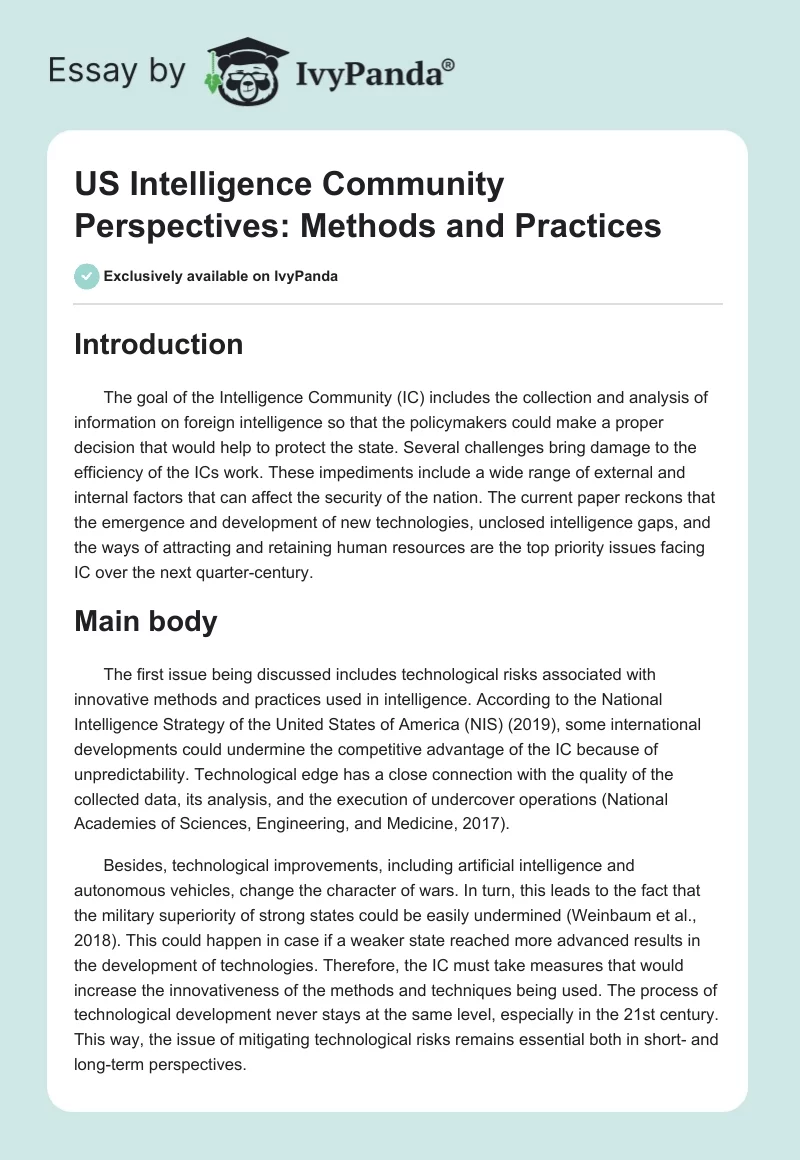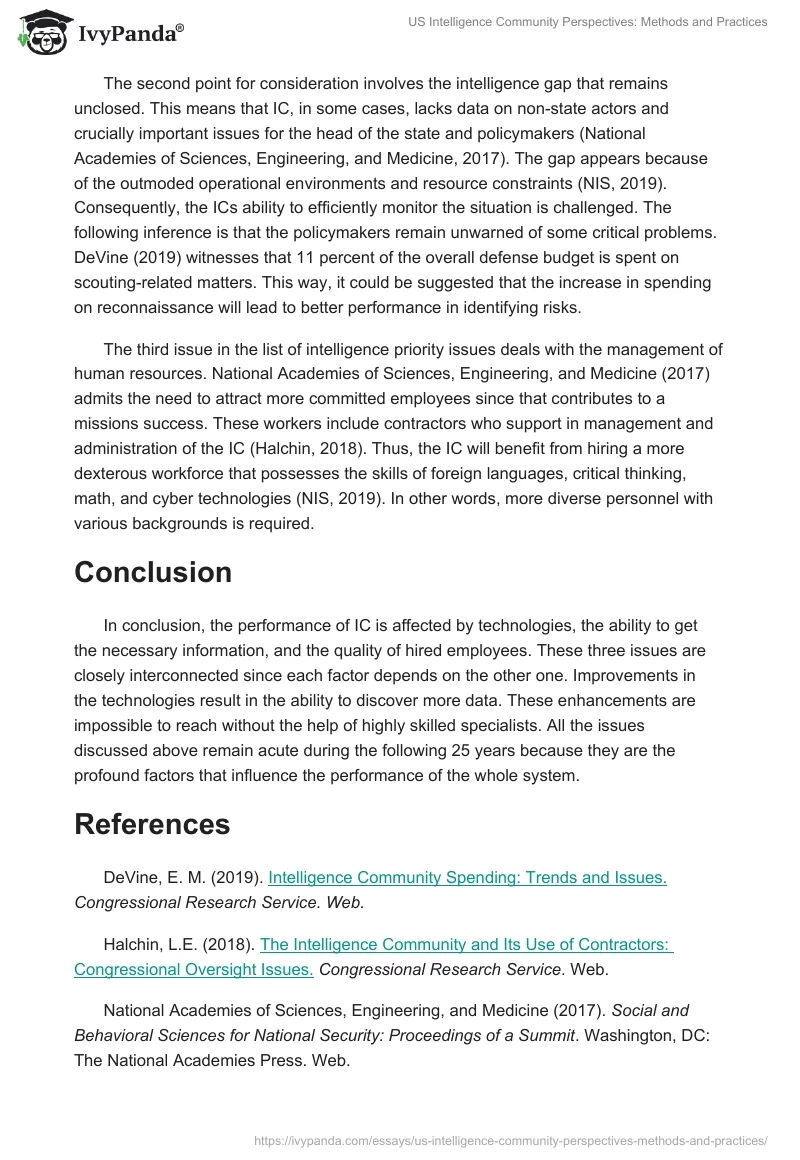Introduction
The goal of the Intelligence Community (IC) includes the collection and analysis of information on foreign intelligence so that the policymakers could make a proper decision that would help to protect the state. Several challenges bring damage to the efficiency of the ICs work. These impediments include a wide range of external and internal factors that can affect the security of the nation. The current paper reckons that the emergence and development of new technologies, unclosed intelligence gaps, and the ways of attracting and retaining human resources are the top priority issues facing IC over the next quarter-century.
Main body
The first issue being discussed includes technological risks associated with innovative methods and practices used in intelligence. According to the National Intelligence Strategy of the United States of America (NIS) (2019), some international developments could undermine the competitive advantage of the IC because of unpredictability. Technological edge has a close connection with the quality of the collected data, its analysis, and the execution of undercover operations (National Academies of Sciences, Engineering, and Medicine, 2017).
Besides, technological improvements, including artificial intelligence and autonomous vehicles, change the character of wars. In turn, this leads to the fact that the military superiority of strong states could be easily undermined (Weinbaum et al., 2018). This could happen in case if a weaker state reached more advanced results in the development of technologies. Therefore, the IC must take measures that would increase the innovativeness of the methods and techniques being used. The process of technological development never stays at the same level, especially in the 21st century. This way, the issue of mitigating technological risks remains essential both in short- and long-term perspectives.
The second point for consideration involves the intelligence gap that remains unclosed. This means that IC, in some cases, lacks data on non-state actors and crucially important issues for the head of the state and policymakers (National Academies of Sciences, Engineering, and Medicine, 2017). The gap appears because of the outmoded operational environments and resource constraints (NIS, 2019). Consequently, the ICs ability to efficiently monitor the situation is challenged. The following inference is that the policymakers remain unwarned of some critical problems. DeVine (2019) witnesses that 11 percent of the overall defense budget is spent on scouting-related matters. This way, it could be suggested that the increase in spending on reconnaissance will lead to better performance in identifying risks.
The third issue in the list of intelligence priority issues deals with the management of human resources. National Academies of Sciences, Engineering, and Medicine (2017) admits the need to attract more committed employees since that contributes to a missions success. These workers include contractors who support in management and administration of the IC (Halchin, 2018). Thus, the IC will benefit from hiring a more dexterous workforce that possesses the skills of foreign languages, critical thinking, math, and cyber technologies (NIS, 2019). In other words, more diverse personnel with various backgrounds is required.
Conclusion
In conclusion, the performance of IC is affected by technologies, the ability to get the necessary information, and the quality of hired employees. These three issues are closely interconnected since each factor depends on the other one. Improvements in the technologies result in the ability to discover more data. These enhancements are impossible to reach without the help of highly skilled specialists. All the issues discussed above remain acute during the following 25 years because they are the profound factors that influence the performance of the whole system.
References
DeVine, E. M. (2019). Intelligence Community Spending: Trends and Issues.Congressional Research Service. Web.
Halchin, L.E. (2018). The Intelligence Community and Its Use of Contractors: Congressional Oversight Issues.Congressional Research Service. Web.
National Academies of Sciences, Engineering, and Medicine (2017). Social and Behavioral Sciences for National Security: Proceedings of a Summit. Washington, DC: The National Academies Press. Web.
National Intelligence Strategy of the United States of America(2019). Web.
Weinbaum, C., Parachini, V. J., Girven, S. R., Decker, H. M., Baffa, C. M. (2018). Perspectives and Opportunities in Intelligence for U.S. Leaders. Web.


